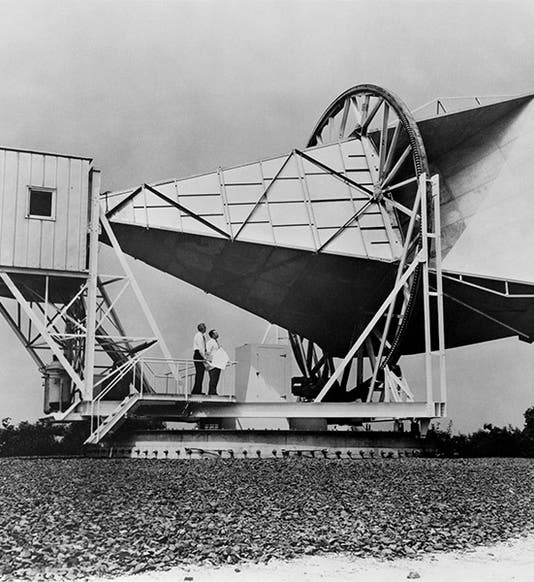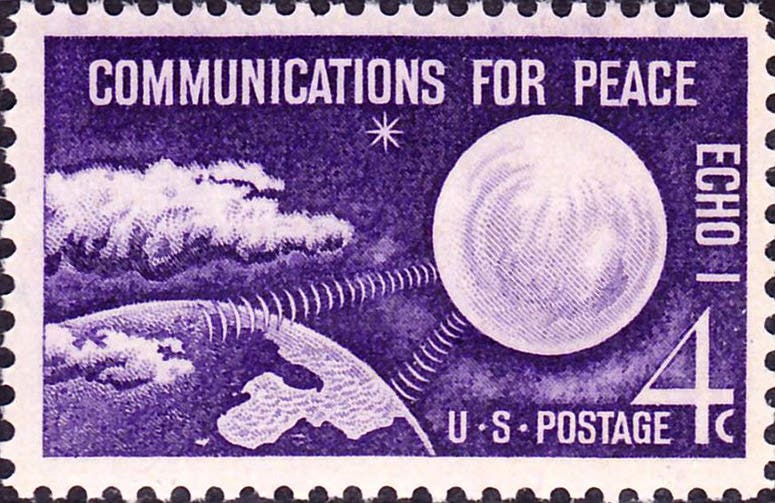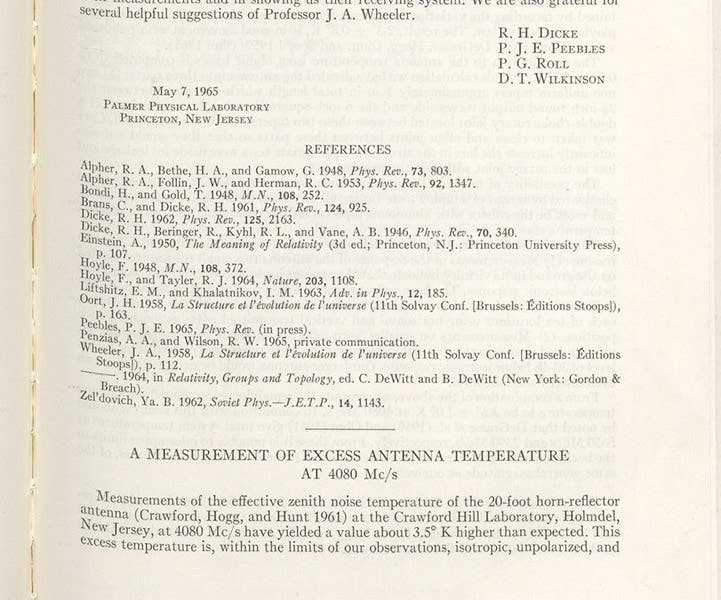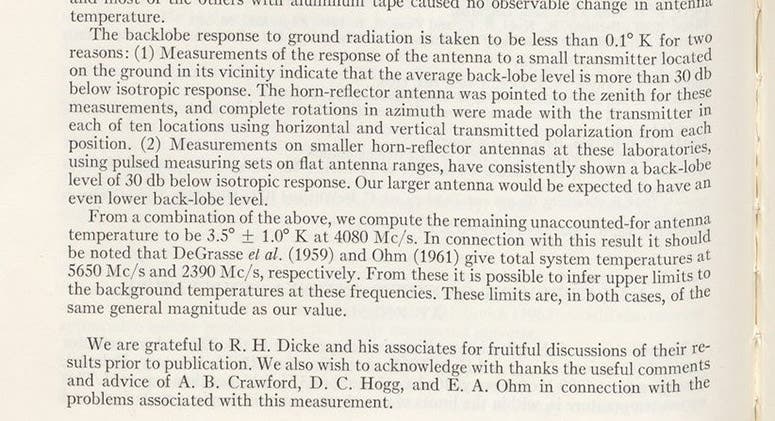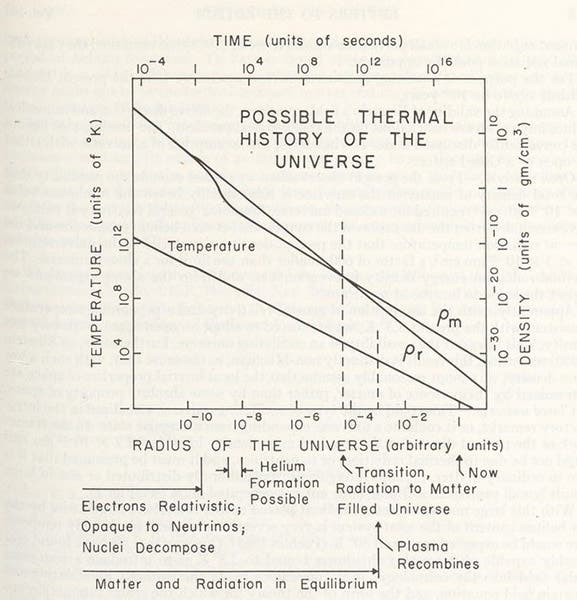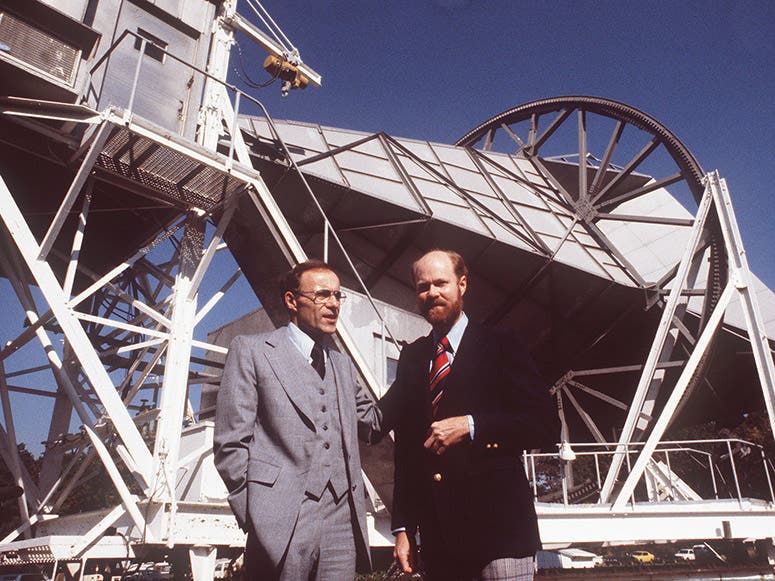Scientist of the Day - Robert Woodrow Wilson
Robert Woodrow Wilson, an American astronomer, was born Jan. 10, 1936. Hailing from Texas, he completed his PhD at Caltech and soon went to work at Bell Labs in New Jersey, where he teamed up with an émigré from Germany, Arno Penzias, who was a physicist. Both were interested in the budding field of radio astronomy. Bell Labs hired them to work on satellite communications. The Labs had a large horn antenna in Holmdel, New Jersey, that they had built to communicate with the Echo satellite that was launched in 1960. The antenna picked up microwaves that were bounced off the reflective skin of the 100-foot diameter Mylar sphere and allowed communication between Holmdel and the Goldstone station run by Jet Propulsion Labs in California. The horn shape was chosen for the antenna because it provided less noise than other configurations, and Wilson and Penzias were assigned the task of improving the signal-to-noise ratio of the antenna.
They made all sorts of improvements, physical and electronic, even famously evicting a pair of pigeons that insisted on nesting inside the horn. But still they had noise, and they could not figure out the cause – was it the nearby freeway, or random terrestrial radio noise, or perhaps radiation from the Sun or Moon? Almost in exasperation, on May 20, 1964, they pointed the antenna at the emptiest region of deep space they could find, and they were surprised to find that there was still a hum, or buzz at a certain frequency. The hum continued no matter where they pointed the antenna. Being good scientists, they measured the frequency of the hum. In astrophysics, a frequency corresponds to a temperature; hot objects like the sun emit radiation with frequencies in the range of visible light and the infrared; cooler things emit radiation of longer wavelength and lower frequency. The radiation picked up by the Holmdel antenna was in the long microwave region and corresponded to a temperature of 3.5 degrees Kelvin (we would now say 3.5 kelvins), not far above absolute zero. Further study revealed that this microwave radiation remained unchanged no matter where they pointed the antenna. It was truly cosmic. They had no idea of its origin.
Fortunately, Wilson and Penzias were put in touch with a group of theoretical physicists working just 36 miles away, at Princeton, headed by Robert Dicke. These physicists were studying the implications of the Big Bang theory proposed by George Gamow and Ralph Alpher in 1948, and they realized that, as the universe expanded, the radiation from the Big Bang must have cooled at a predictable rate, and they determined that the remnant temperature should be around 3 kelvins, but they had no idea how to detect it. Soon it became evident that they didn't have to, because Penzias and Wilson had done so. They had found the cosmic background radiation, an echo of the Big Bang.
Wilson and Penzias, and the Princeton group, both published papers, back-to-back, in Astrophysical Journal in May of 1965. The Penzias-Wilson paper is not much more than a page long; the Dicke et al. paper is 4 pages. We show here details of both papers; notice that the beginning of the Penzias-Wilson paper immediately follows the Dicke paper, whose authors you can see at the top (third image, above). You can see the 3.5 degree figure prominently in a second detail of the Penzias-Wilson paper (fourth image, just above). The Dicke paper also has a simple graphic, showing the cooling of the universe as it expanded, in the form of a temperature line that slants down from trillions of degrees at the left to near zero at the right (fifth image, below).
The cosmic background radiation is now referred to as the CMB – the Cosmic Microwave Background – and it is one of the big deals in cosmology in the past 75 years. It was one of the first pieces of hard evidence for the Big Bang hypothesis, since there seemed to be no other way to account for the microwave radiation. Wilson, the astronomer of the pair, received the Henry Draper medal in astrophysics in 1977 for the discovery (we discussed and showed the Draper medal in a post in 2019), and both men shared the Nobel Prize in Physics in 1978. In 2014, there was a festive 50-year anniversary celebration at the Holmdel Labs that both men were able to attend.
We wrote a post on Penzias four years ago, in which we showed a modern photo of the Holmdel horn antenna (now a National Historic Landmark), and a photo of Penzias and Wilson, not long after the discovery of 1964. For this post, we show a photo of the antenna taken in 1962, when it was almost new (first image), and a photo of Penzias and Wilson in 1978, at the time of their Nobel award (sixth image; Wilson is on the right). We also show the reflective Mylar sphere that started the whole thing, the Echo I satellite as depicted on a U.S. Postage stamp in 1960. If the CMB or Wilson and Penzias or the Holmdel antenna have been honored with a stamp, I am unaware of it. It might be time.
.
Dr. William B. Ashworth, Jr., Consultant for the History of Science, Linda Hall Library and Associate Professor emeritus, Department of History, University of Missouri-Kansas City. Comments or corrections are welcome; please direct to ashworthw@umkc.edu.

